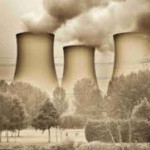Created by: farooq92
Number of Blossarys: 47
Air pollution produced when acid chemicals are incorporated into rain, snow, fog or mist. The "acid" comes from sulfur oxides and nitrogen oxides, products of burning coal and other fuels. ...
The standard system that state and local air pollution control programs use to notify the public about levels of air pollution. The AQI tracks levels of two pollutants - ozone (smog) and particle ...
Fuels that can replace ordinary gasoline. Alternative fuels may have particularly desirable energy efficiency and pollution reduction features. Alternative fuels include compressed natural gas, ...
A colorless, odorless, poisonous gas, produced by incomplete burning of carbon-based fuels, including gasoline, oil, and wood. Carbon monoxide is also produced from incomplete combustion of many ...
These chemicals and some related chemicals have been used in great quantities in industry, for refrigeration and air conditioning, and in consumer products. When CFCs are released into the air, they ...
The original Clean Air Act was passed in 1963, but our national air pollution control program is actually based on the 1970 update. The 1990 Clean Air Act Amendments are the most far-reaching ...
Another word for burning. Many important pollutants, such as sulfur dioxide, nitrogen oxides, and particulates (PM-10) are combustion products, often products of the burning of fuels such as coal, ...


 English (EN)
English (EN)